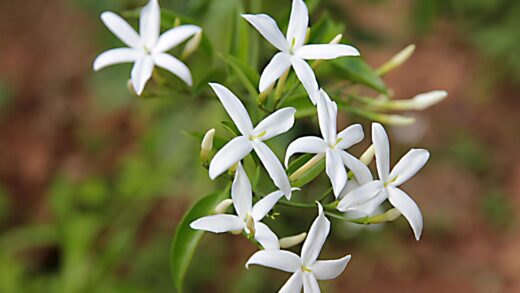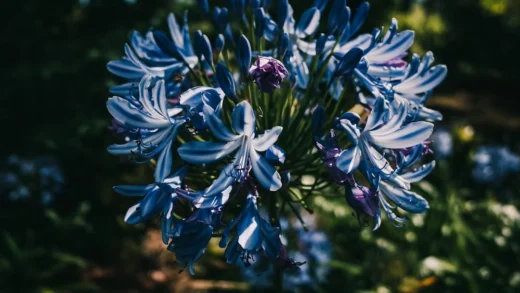Understanding the precise water requirements of coleus is fundamental to their cultivation, as improper irrigation is one of the most common causes of failure with these plants. Native to tropical environments, coleus have a natural affinity for consistently moist soil, but they are highly intolerant of waterlogged conditions which can quickly lead to fatal root rot. The key to successful watering lies in achieving a delicate balance: providing sufficient moisture to support their lush, leafy growth and prevent wilting, while ensuring the root system has access to the oxygen it needs to function. This balance is influenced by a multitude of factors, including the plant’s location, the type of soil, the size of the container, and prevailing weather conditions, all of which must be considered to develop an effective irrigation strategy.
The primary indicator for when to water a coleus is the condition of the soil. Rather than adhering to a rigid schedule, it is far more effective to check the moisture level by touch. Insert a finger into the top 2-3 centimeters (about an inch) of the soil; if it feels dry, it is time to water. This method accounts for daily variations in temperature and humidity that affect how quickly the soil dries out. When watering is necessary, it should be done thoroughly, applying enough water so that it soaks the entire root ball and a small amount begins to drain from the bottom of the pot. This ensures that all the roots have access to moisture and helps to flush out any accumulated salts from fertilizers.
The type of container and growing medium significantly impacts a coleus plant’s water needs. Plants grown in porous terracotta pots will dry out much more quickly than those in plastic or glazed ceramic containers. Similarly, smaller pots hold less soil volume and therefore need to be watered more frequently than larger ones. The soil composition itself is also a major factor; a light, well-aerated potting mix with good drainage will require more frequent watering than a denser, heavier garden soil that retains moisture for longer periods.
Coleus grown in garden beds have different watering dynamics compared to their container-grown counterparts. While they still require consistent moisture, their roots have access to a larger volume of soil, which acts as a buffer against drying out too quickly. However, they are also in competition with other plants for available water. During hot, dry spells, garden-grown coleus will likely need supplemental watering, even if surrounding plants seem fine. Applying a layer of organic mulch, such as shredded bark or compost, around the base of the plants can help to conserve soil moisture, suppress weeds, and keep the root zone cool.
The time of day when watering occurs can also affect the health of the plant. It is best to water coleus in the early morning. This allows the plant to be well-hydrated before the heat of the day sets in, reducing the risk of wilting and stress. Watering in the morning also gives any moisture that splashes onto the foliage ample time to evaporate in the sun, which helps to prevent the development of fungal diseases that thrive on damp leaves. Avoid watering in the evening if possible, as the foliage may remain wet overnight, creating an ideal environment for pathogens like downy mildew.
More articles on this topic
Factors influencing water needs
Several environmental factors dynamically influence how much and how often a coleus plant needs to be watered. The most significant of these is light exposure and temperature. A coleus growing in a sunny location will transpire—lose water through its leaves—at a much faster rate than one growing in the shade. Similarly, on hot, windy days, moisture is wicked away from both the leaves and the soil surface more rapidly. Consequently, plants in warmer, sunnier, or windier spots will require more frequent and thorough watering to prevent dehydration and wilting.
The stage of the plant’s growth cycle also plays a crucial role in its water consumption. During periods of active, vigorous growth in the spring and summer, a coleus will have a high demand for water to support the production of new leaves and stems. Its metabolic rate is high, and water is essential for photosynthesis and nutrient transport. In contrast, during the cooler months of autumn and winter, the plant’s growth slows considerably or may even become dormant. During this period, its water requirements are significantly reduced, and the frequency of irrigation must be cut back accordingly to avoid oversaturating the soil.
The specific cultivar of coleus can also have an impact on its water needs. Varieties with larger leaves have a greater surface area from which to lose water and may wilt more quickly than those with smaller or thicker leaves. While all coleus prefer moist soil, some of the newer, sun-tolerant varieties have been bred for increased vigor and may be slightly more resilient to brief periods of dryness than their shade-loving counterparts. However, no coleus should be considered drought-tolerant; consistent moisture remains a key requirement across all types for optimal performance.
The overall health of the plant, particularly its root system, directly affects its ability to absorb water. A plant with a large, healthy, and well-established root system is much more efficient at taking up moisture from the soil than a young, newly planted specimen or one with a compromised root system due to disease or damage. For this reason, recently transplanted coleus require particularly careful water management, as their disturbed roots need time to recover and grow into the new soil. Keeping the soil consistently moist but not wet is vital during this establishment phase.
More articles on this topic
Recognizing signs of water stress
Wilting is the most obvious and immediate sign of underwatering in coleus. The plant’s leaves and stems will droop and appear limp, a direct result of the cells losing turgor pressure due to a lack of water. In the early stages, this is a temporary condition that the plant can quickly recover from once it receives a thorough watering. However, if the wilting is severe or prolonged, it can lead to permanent damage, causing the edges of the leaves to turn brown and crispy. Repeatedly allowing a coleus to wilt to this point will stress the plant, stunt its growth, and make it more susceptible to pests and diseases.
Conversely, the symptoms of overwatering can be more subtle and are often mistaken for other problems. An overwatered coleus may also appear wilted, but for a very different reason: its roots are suffocating in waterlogged soil and have begun to rot, rendering them unable to absorb water and nutrients to send to the leaves. A key difference is that the soil of an overwatered, wilted plant will be wet to the touch. Other signs of overwatering include yellowing lower leaves that drop off, soft or mushy stems near the soil line, and a general lack of vigor or stunted growth. A musty or sour smell from the soil is a strong indicator of root rot.
Leaf drop can be a symptom of both under- and overwatering. When a coleus is too dry, it may shed its lower leaves to conserve moisture for the new growth at the top. When it is too wet, the yellowing lower leaves will often drop off as the root system begins to fail. To diagnose the problem, always check the condition of the soil. Dry, pulling-away-from-the-sides-of-the-pot soil points to underwatering, while consistently soggy or heavy soil indicates an overwatering issue. Correcting the watering frequency is the first step to recovery.
Beyond wilting and leaf drop, other subtle clues can indicate water stress. The vibrant colors of the foliage may appear dull or faded when the plant is consistently dehydrated. In cases of chronic overwatering, the plant may develop edema, a condition where the roots absorb water faster than the leaves can transpire it, causing water-soaked blisters or bumps to form on the undersides of the leaves. Paying close attention to these signals allows for early intervention, which is critical for restoring the plant to good health before irreversible damage occurs.
Watering techniques for containers
Watering coleus in containers requires a different approach than watering those in garden beds due to the limited soil volume and faster drying rates. The best practice is to water deeply and thoroughly, rather than giving small, frequent splashes. Apply water slowly and evenly to the soil surface until it begins to flow out of the container’s drainage holes. This ensures that the entire root ball is saturated and not just the top layer of soil. Allowing the pot to drain freely is crucial; a pot sitting in a saucer full of water is a primary cause of root rot. After about 15-20 minutes, discard any excess water that has collected in the saucer.
The material and size of the container have a significant impact on the watering schedule. Terracotta or unglazed clay pots are porous and allow moisture to evaporate through their sides, causing the soil to dry out much faster than in non-porous plastic or glazed ceramic pots. Small containers hold less soil and will need watering more frequently, sometimes daily or even twice a day during very hot weather. Larger containers provide a greater reservoir of soil and moisture, offering a buffer and requiring less frequent irrigation. Self-watering planters can also be an excellent option for coleus, as they provide a consistent supply of moisture from a reservoir at the base, reducing the risk of both drying out and overwatering.
When watering hanging baskets and window boxes containing coleus, special attention is required. These containers are exposed to wind and sun from all sides, leading to very rapid drying. They often require daily watering during the summer months. To water them effectively without creating a mess, it can be helpful to take them down and place them in a tub or sink, allowing them to soak up water from the bottom for about 30 minutes. Alternatively, using a watering wand with a gentle shower setting allows for precise and thorough watering of the soil surface without dislodging the soil or damaging the foliage.
During the winter months, when coleus are brought indoors, their watering needs change dramatically. The combination of lower light levels and cooler indoor temperatures (even with central heating) causes the plant’s growth to slow down significantly. As a result, they require much less water. It is essential to allow the soil to dry out more between waterings, perhaps checking every week or so. Overwatering is the most common reason for the demise of overwintered coleus, so it is crucial to adjust irrigation practices to match the plant’s semi-dormant state.
Irrigation in garden beds
Coleus planted directly in garden beds generally have a more stable moisture environment for their roots compared to container plants. The surrounding soil mass acts as a large reservoir, buffering against rapid drying. However, they are not immune to drought, especially newly planted specimens whose root systems have not yet expanded into the surrounding earth. For the first few weeks after planting, it is vital to keep the soil around the root ball consistently moist to encourage establishment. Checking the soil moisture every few days and watering deeply when the top few inches are dry is a good practice.
The method of water application in a garden setting is important for both water conservation and plant health. Using a soaker hose or a drip irrigation system is highly efficient, as it delivers water slowly and directly to the root zone, minimizing evaporation and ensuring deep penetration into the soil. This method also keeps the foliage dry, which is a key strategy for preventing fungal diseases like downy mildew. If using a sprinkler or watering by hand with a hose, it is best to do so in the early morning so that the leaves have the entire day to dry off.
Applying a layer of organic mulch around the base of coleus plants in a garden bed is one of the most beneficial practices for moisture management. A 5-7 centimeter (2-3 inch) layer of mulch, such as shredded bark, compost, or straw, helps to insulate the soil, keeping it cooler in the summer and reducing moisture loss through evaporation. Mulch also suppresses weed growth, which means less competition for available water and nutrients. As the organic mulch breaks down over time, it also improves the soil structure and fertility.
Assessing the natural rainfall is an important part of managing irrigation for garden-grown coleus. After a significant rain event, supplemental watering is likely unnecessary. A simple rain gauge can help to quantify how much water the garden has received. A general rule for many garden plants is that they require about an inch of water per week, either from rain or irrigation. However, this is just a guideline, and the best approach remains to physically check the soil moisture before deciding whether to water, taking into account the specific conditions of your garden, such as soil type (sandy soils dry faster than clay soils) and sun exposure.


















